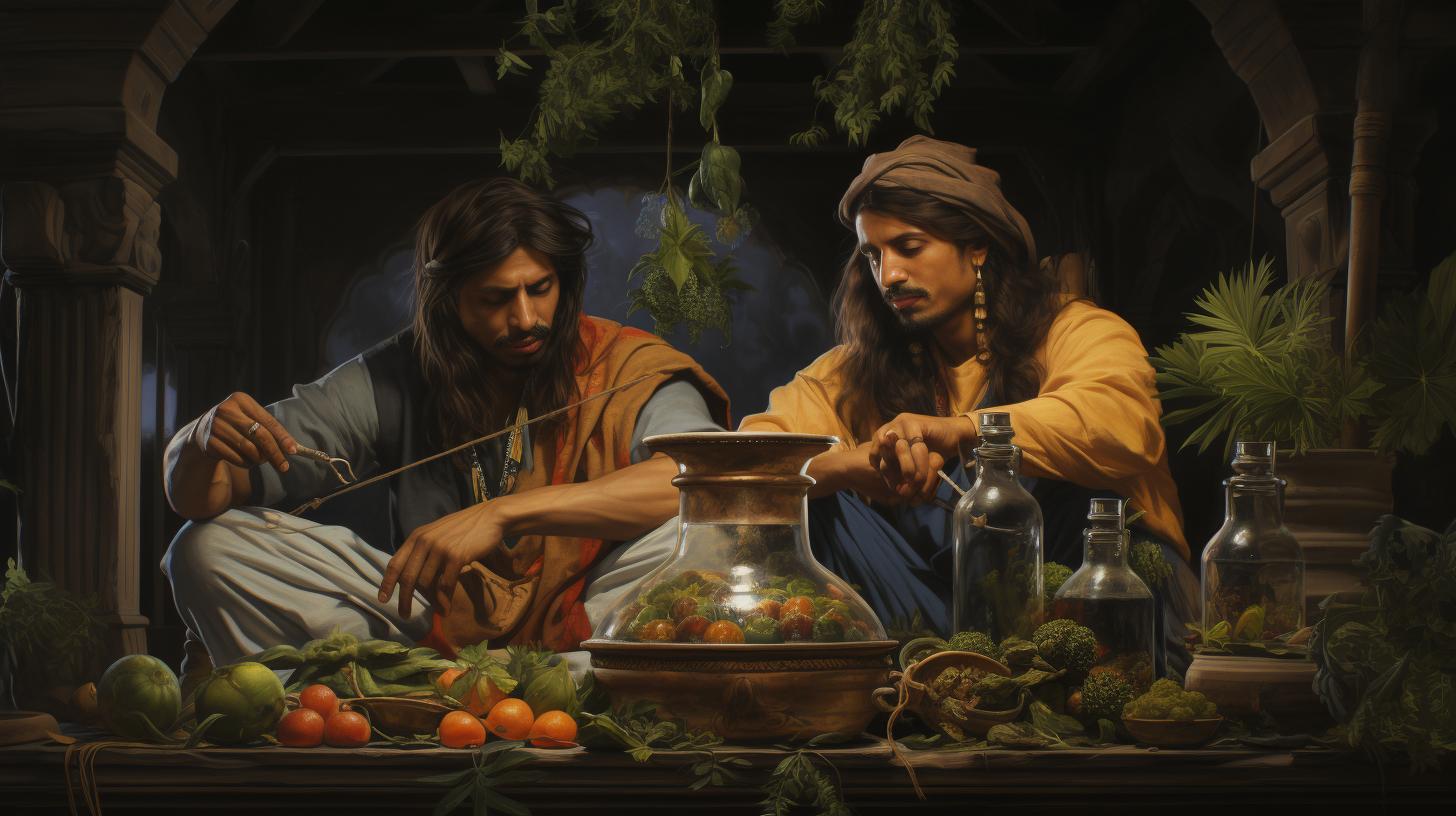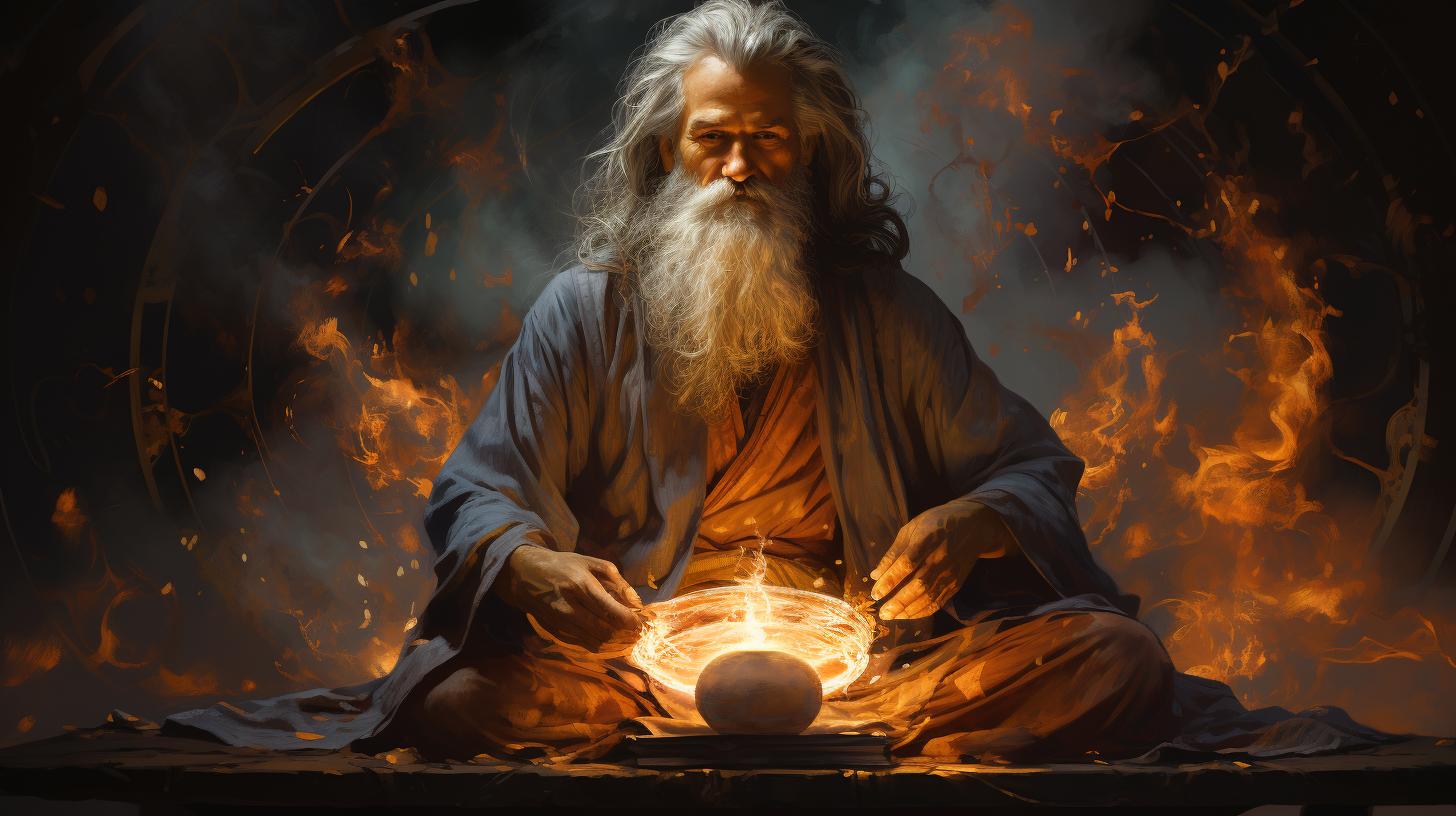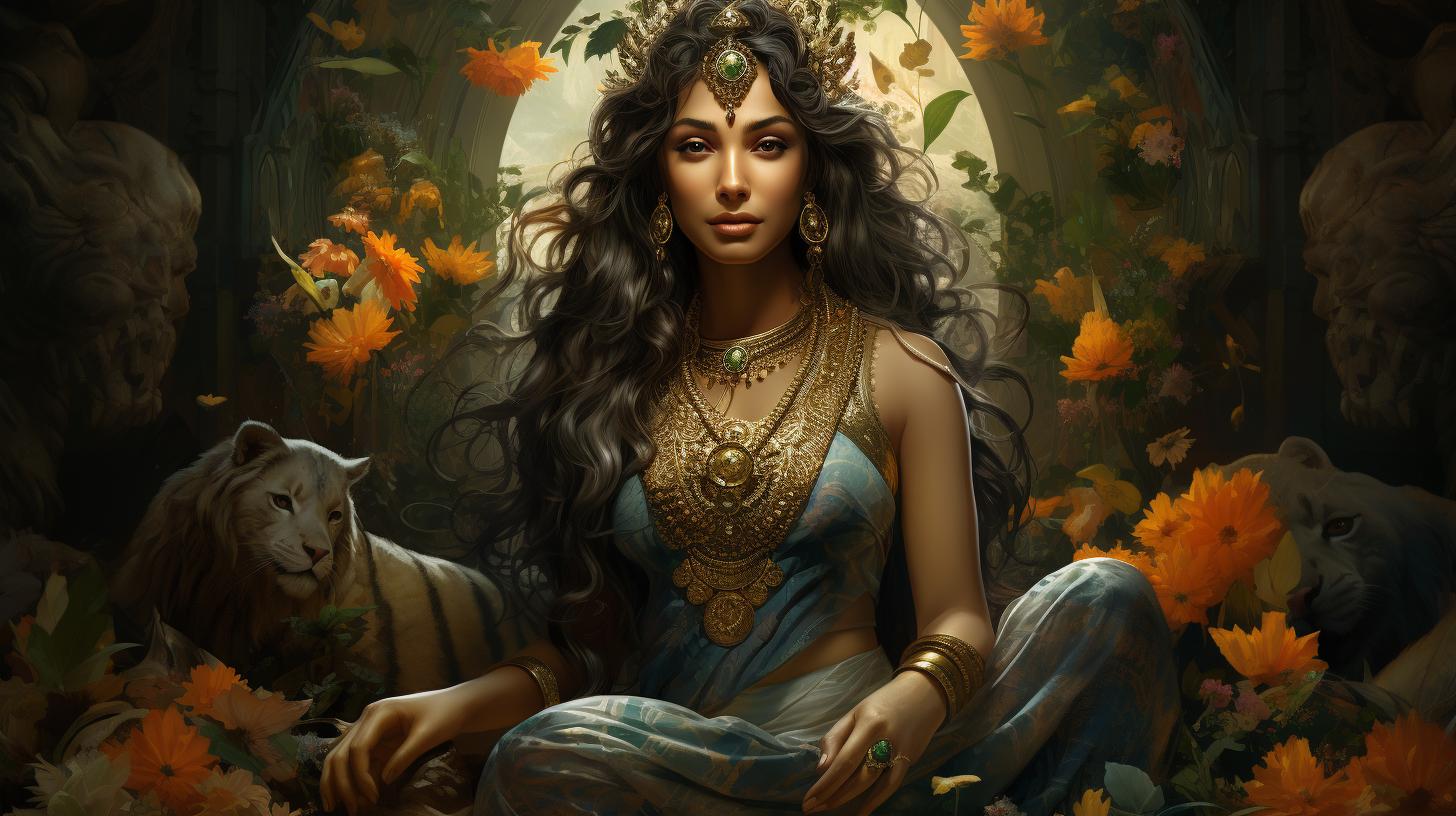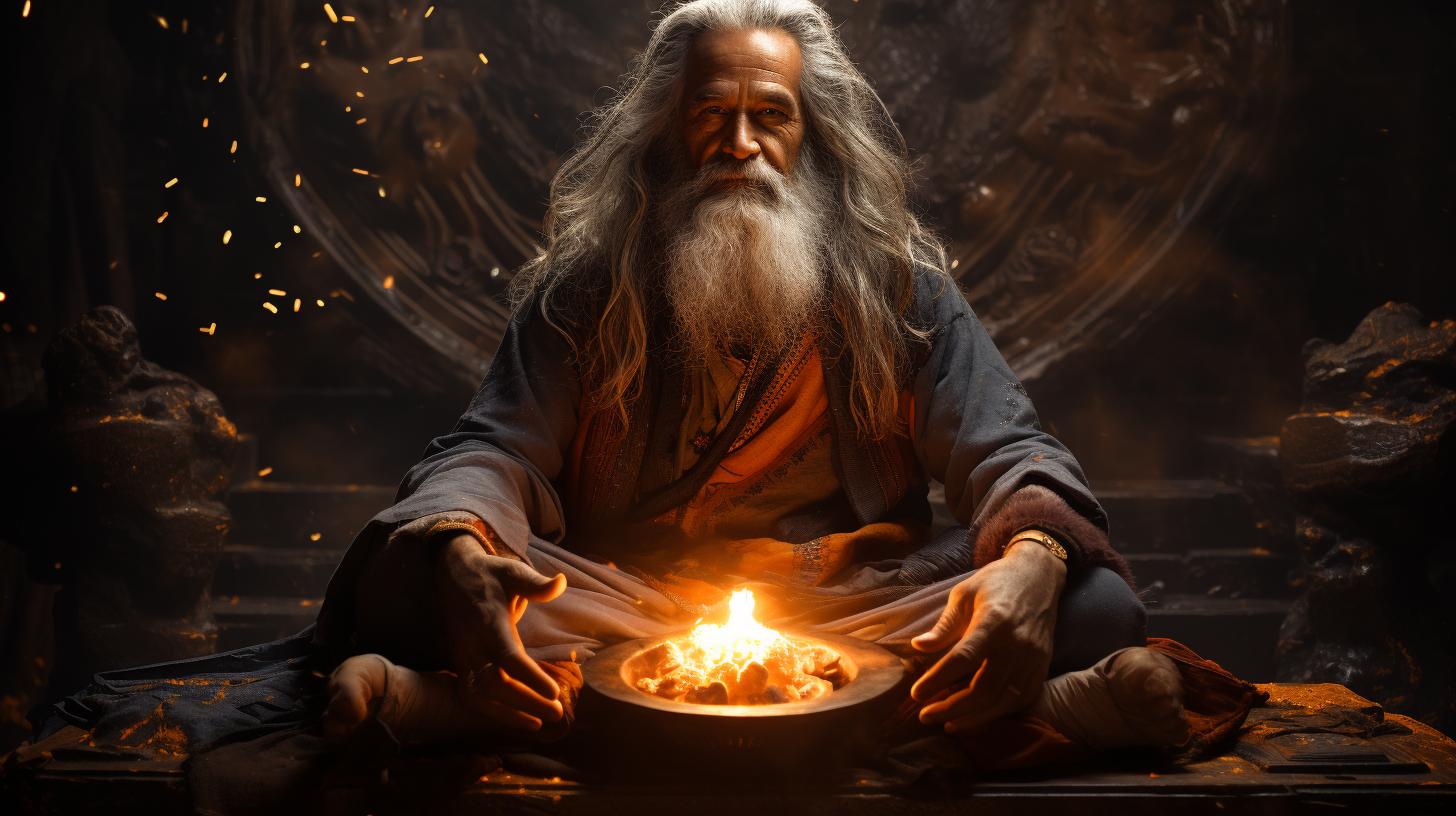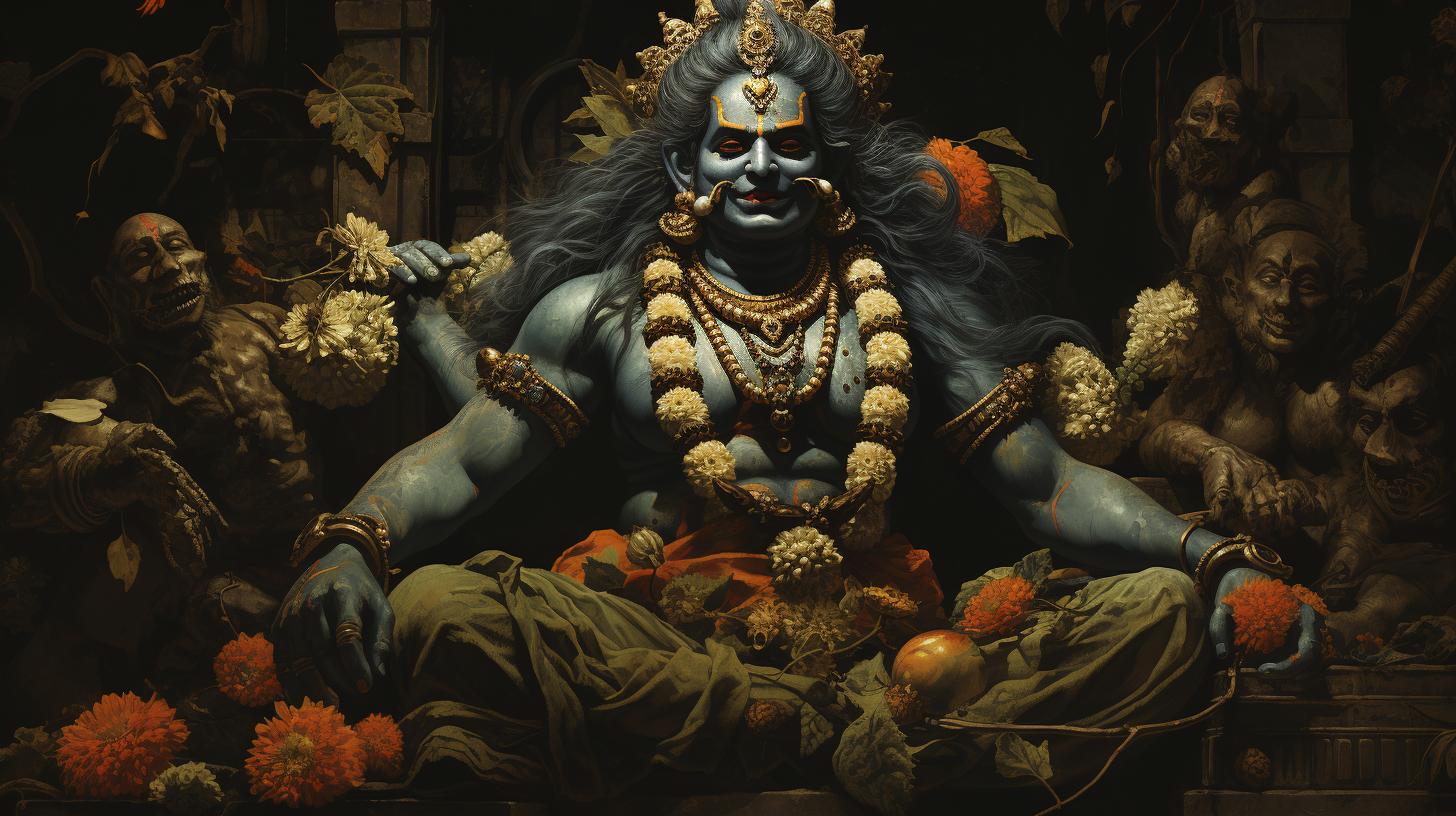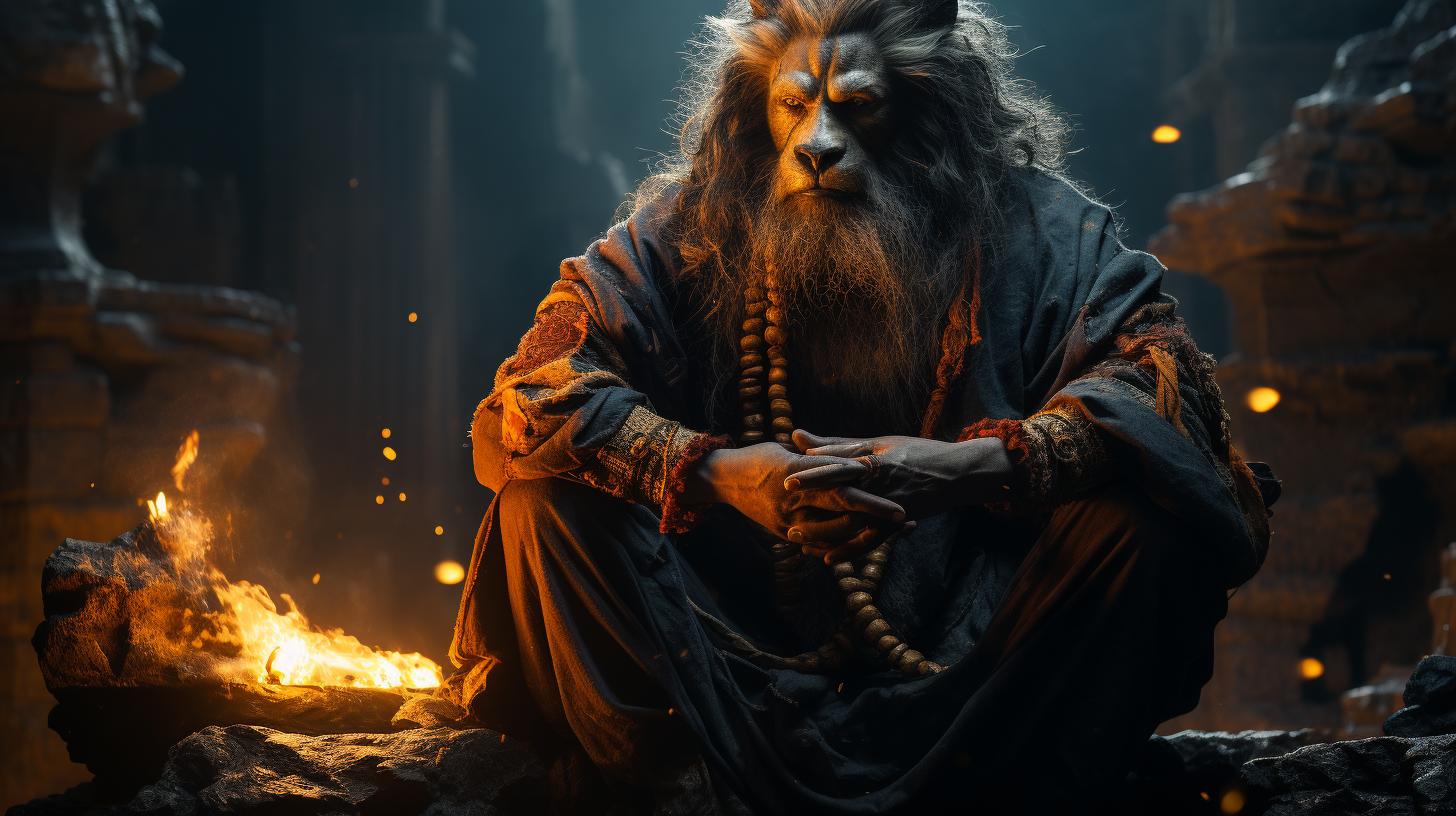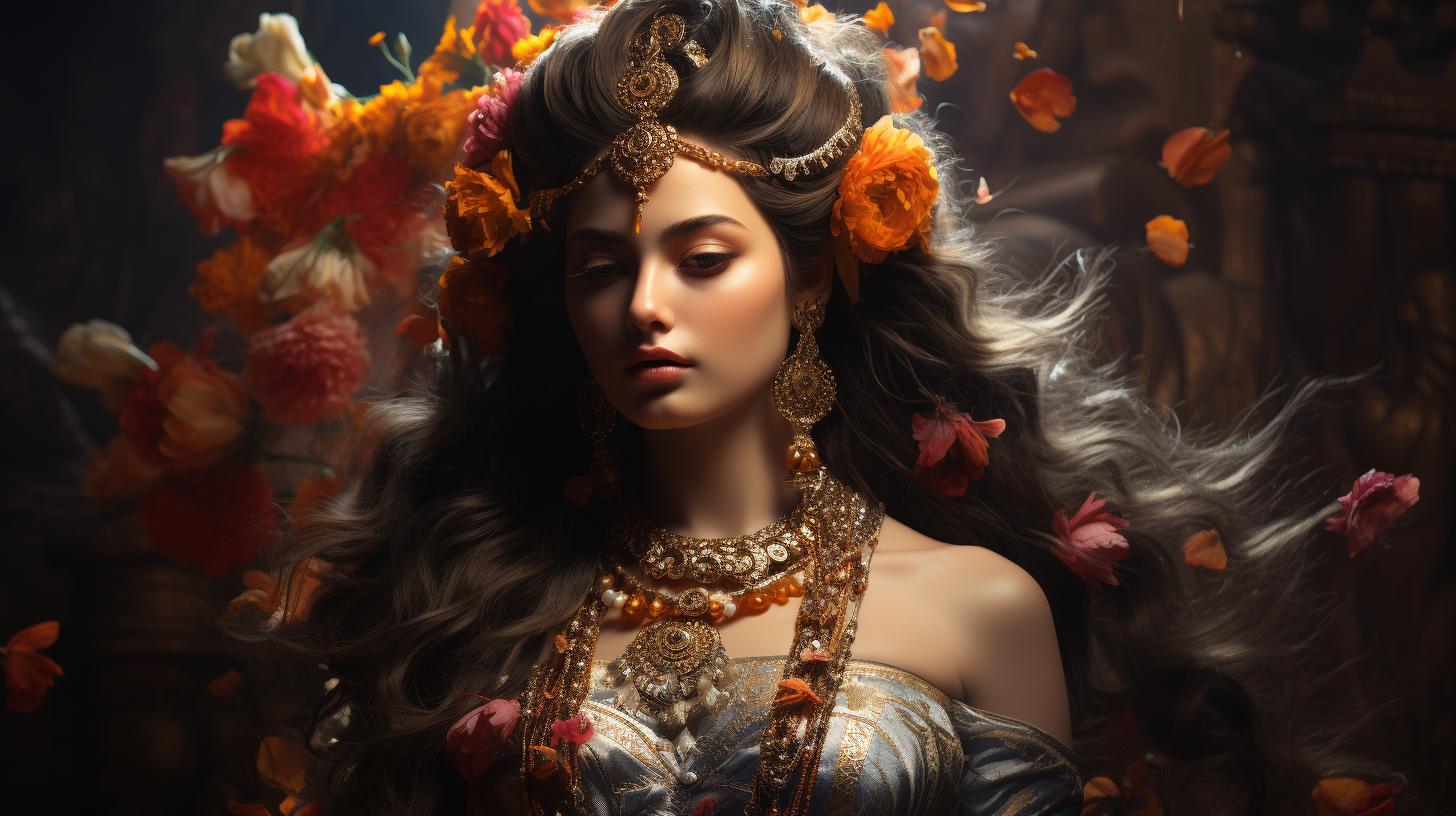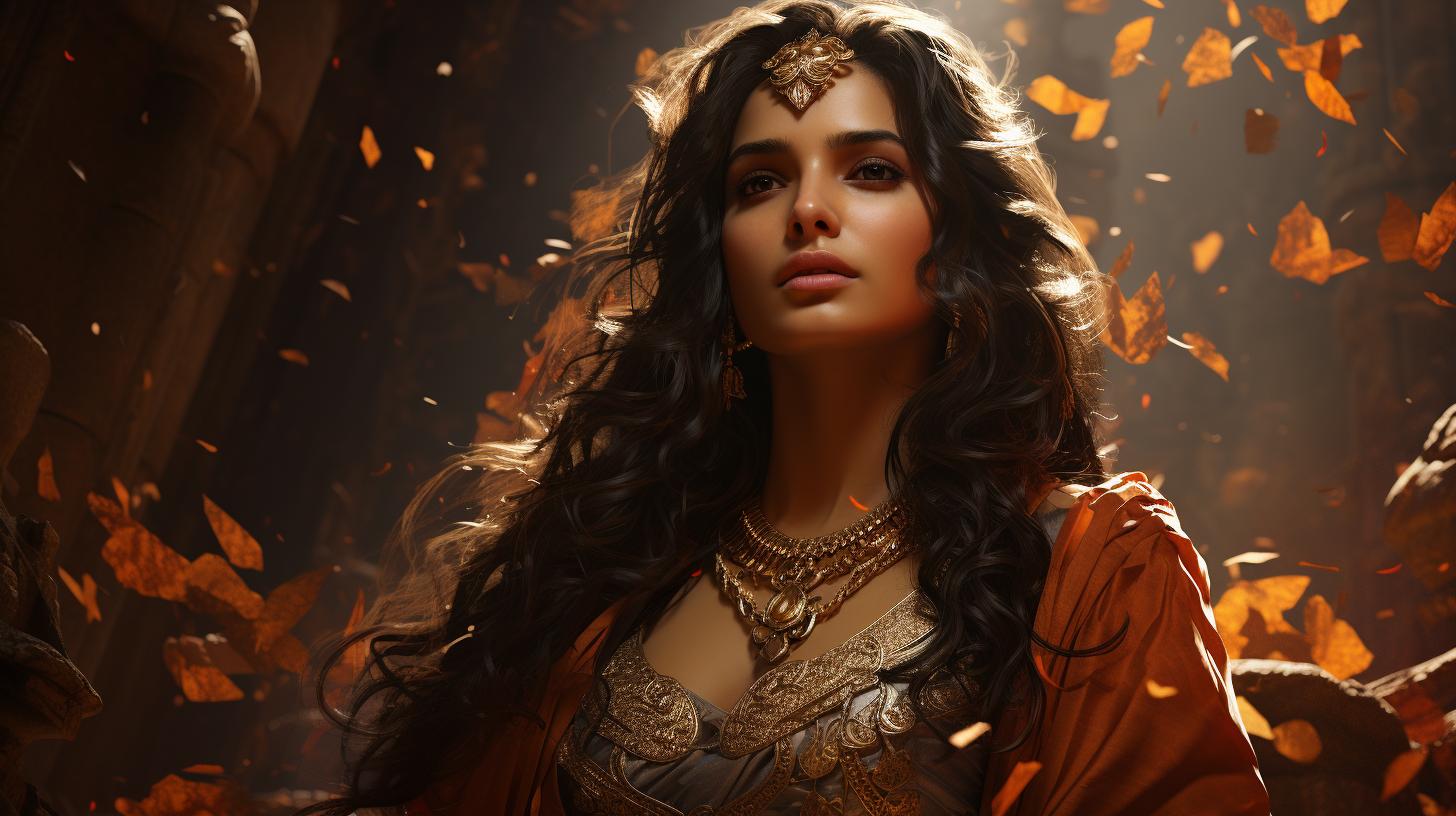‘Ashvins Hindu God: Exploring the Mythology and Significance’
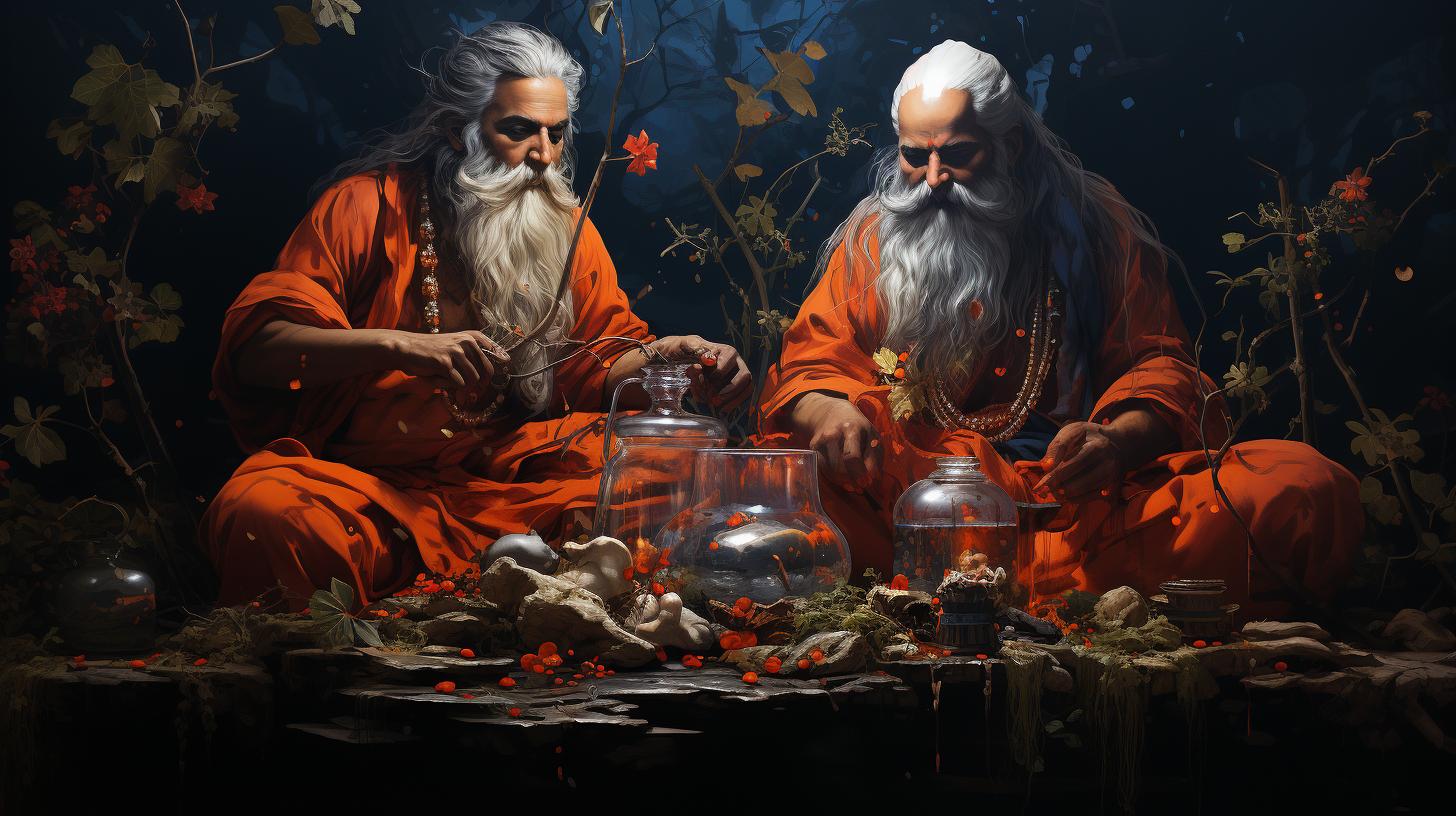
The Ashvins Hindu god holds a significant place in Hindu mythology, representing a cosmic duality of ideas such as light and darkness, healing and destruction. They are eternal, youthful, and gifted with special powers.
Associated with the control of weather and revered as divine healers, the Ashvins are regarded as the doctors of the gods. Their name derives from the Sanskrit word for “horse” and they are closely connected with these animals.
Their presence in Vedic texts and parallels in Indo-European mythologies showcase their enduring importance.
Overview of Ashvins Hindu God
The Ashvins are prominent figures in Hindu mythology, known as the divine twins associated with healing, duality, and cosmic significance. As sons of the solar deity Surya, they hold a significant place in Hindu pantheon.
Revered for their youthful and handsome appearance, the Ashvins are often referred to as the ‘Horsemen’ due to their close association with horses.
In Hindu mythology, the Ashvins are considered the gods’ doctors, representing dualistic concepts such as light and darkness, creation and destruction.
They possess extraordinary powers and are celebrated for their ability to cure ailments and provide healing to both gods and mortals.
The Ashvins’ mythological origins are deeply rooted in Vedic texts and they appear frequently throughout Hindu scriptures.
Their importance is showcased through numerous hymns dedicated to them, highlighting their role as divine healers and guardians.
The twins are known for their special powers, including shape-shifting abilities and the capacity to control the weather.
Their association with the sun god Surya further enhances their significance as bringers of light and warmth. In addition to their divine duties, the Ashvins are also recognized as the parents of Nakula and Sahadeva, the Pandava princes in the epic Mahabharata.
Comparative mythologies reveal similarities between the Ashvins and other twin gods, such as Castor and Pollux in Greek mythology. These parallels signify shared cultural beliefs and reflect the enduring significance of divine twins across Indo-European traditions.
Throughout Hinduism, the Ashvins hold symbolic interpretations, representing the balance of opposing forces and the interconnectedness of cosmic energies. Their representations in art and iconography further reinforce their significance within the religious and cultural landscape.
As we explore the role and symbolism of the Ashvins in Hindu mythology, it becomes apparent that their presence and influence extend far beyond their twin deity status. Their powers, associations, and contributions within Vedic texts provide a fascinating glimpse into the multifaceted nature of these divine figures.
Mythological Origins and Significance
The mythological origins and significance of Ashvins in Hinduism hold great intrigue and symbolism. These twin deities are believed to be the divine sons of the sun god, Surya, making them prominent figures in the Hindu pantheon.
The Ashvins, often referred to as the ‘Horsemen’ or ‘Divine Twins,’ embody duality and represent cosmic ideas such as light and darkness, healing and destruction.
As per Vedic literature, the Ashvins were born either from the sky or directly from Surya himself.
Their special powers encompass the ability to shape-shift and heal, earning them the title of divine physicians. They are renowned for their association with the changing seasons and their control over weather phenomena.
Notably, the Ashvins are revered as the parents of Nakula and Sahadeva, two heroic princes from the Mahabharata epic. This connection further highlights their role in shaping the destiny of prominent mythological figures.
It is worth mentioning that the name ‘Ashvins’ derives from the Sanskrit word for ‘horse,’ emblematic of their close affinity with these majestic creatures. Their depictions often blend human and equine features, emphasizing their divine nature and equestrian prowess.
In comparative mythology, the Ashvins demonstrate similarities to the Greek gods Castor and Pollux, as well as the Latvian deity Dieva Dēli. These correspondences indicate the pervasive presence of twin gods in the Indo-European belief systems, showcasing the universal fascination with such divine duos.
Their significance in Hindu mythology surpasses that of Dyaus, the god representing the sky or day, despite their familial ties. While Dyaus is associated with the Ashvins and the Earth, their roles and prominence differ considerably.
Key Points:
- Ashvins are twin deities and divine sons of the sun god, Surya.
- They embody duality and represent cosmic concepts like light and darkness, healing and destruction.
- Associated with divine healing and weather control, they hold the title of divine physicians.
- Their name, ‘Ashvins,’ originates from the Sanskrit word for ‘horse,’ reflecting their close connection with these animals.
- They share similarities with other twin gods in Indo-European mythologies, such as Castor and Pollux in Greek mythology.
The Ashvins in Hindu Mythology
The Ashvins hold a significant place within Hindu mythology, representing a divine duo associated with various aspects of life and cosmic balance.
These twin brothers are renowned for their remarkable abilities and divine attributes. In Hindu scriptures and folklore, they are described as the sons of Surya, the sun god, and are often referred to as the “Horsemen.”
According to ancient texts, the Ashvins are eternal, youthful, and extraordinarily attractive. Their physical appearance is often depicted as being handsome and athletic. As celestial physicians, they embody the duality of ideas, symbolizing the interplay between light and darkness, healing and destruction.
They are closely associated with the miraculous powers of healing and are revered as experts in the field of medicine. The Ashvins possess the ability to transform their forms at will, enabling them to bring about resolution and restoration.
In Hindu mythology, they are celebrated for their benevolence towards humanity, offering healing and protection to the mortal realm.
Furthermore, the Ashvins are considered the parents of Nakula and Sahadeva, two of the prominent Pandava princes, who played vital roles in the epic Mahabharata.
This lineage further signifies their significance and connection to mortal affairs.
The name “Ashvins” finds its roots in the Sanskrit term “asva,” which means “horse.” This association with horses is often depicted in artwork and mythology, where they are portrayed with the bodies of men and heads of horses.
They are also referred to by alternative names such as Abdhijau, Badaveyau, and Puskarasrajau.
In ancient Vedic literature, the Ashvins are mentioned extensively, with numerous hymns dedicated to them. These hymns detail the Ashvins’ benevolent interventions in human lives, with accounts of their extraordinary aid and healing prowess.
Notably, the Ashvins find counterparts in other Indo-European mythologies. In Greek mythology, they can be compared to Castor and Pollux, the twin demigods known for their protectiveness and versatility. Similarly, other Indo-European cultures, such as the Latvian mythology, have their own divine twin figures that share resemblances with the Ashvins.
Overall, the Ashvins play a vital role in Hindu mythology, representing a divine union of healing, protection, and cosmic balance. Their presence and influence demonstrate the intricate intersection between gods and mortals in Hindu culture and offer insights into the interconnectedness of various mythological traditions.
Ashvins as Divine Healers and Guardians
The Ashvins in Hindu mythology are revered as divine healers and guardians. They possess exceptional powers and are known for their ability to bring healing and remedy ailments. Their realm is closely associated with medicine and the restoration of well-being.
Healing and Medicine in Ashvins’ Realm
Within the realm of the Ashvins, healing and medicine hold great importance. They are skilled healers, capable of curing various afflictions and illnesses. They bring relief to the gods and mortals alike, using their extraordinary abilities to restore health and vitality.
The Ashvins’ healing prowess extends beyond physical ailments. They are also known to heal emotional, mental, and spiritual wounds, bringing balance and serenity to those in need. Their compassionate nature and deep understanding of the human experience make them indispensable in times of suffering.
Their association with medicine is further emphasized by their role as the gods’ physicians. The Ashvins are often called upon to treat the injuries and illnesses of the other deities, showcasing their expertise and mastery of healing arts.
Ashvins’ Association with the Sun God Surya
The Ashvins’ connection with the sun god Surya enhances their healing abilities. As the sons of Surya, they inherit his divine radiance and vitality. They share a deep bond with their father and accompany him on his celestial journey across the sky.
Their association with Surya also brings them closer to the cycles of nature and the cosmic order. They harness the energy of the sun to bring warmth, light, and life-giving properties to the Earth.
This intertwining of their healing powers with the sun’s transformative energy highlights their crucial role in the natural world.
The Ashvins’ association with Surya symbolizes the harmony between the forces of light and darkness, exemplifying their role as agents of balance and rejuvenation.
Together, they embody the celestial and earthly realms, illuminating the paths to healing and wholeness.
- The Ashvins possess exceptional healing abilities.
- They are revered as divine physicians, providing remedy to gods and mortals.
- Their healing extends to physical, emotional, and spiritual realms.
- The Ashvins’ close association with the sun god Surya enhances their healing powers.
- They bring warmth, light, and life-giving energies to the Earth.
- Their connection with Surya represents the balance between light and darkness.
The Ashvins’ role as divine healers and guardians is vital in maintaining the well-being and equilibrium of the cosmos.
Their powers and associations showcase their significance in Hindu mythology and their ability to bring healing and balance to the world.
Ashvins as Twins and the Symbolism of Duality
The Ashvins, known as the divine twins in Hindu mythology, embody the concept of duality in various aspects of their existence. They are often depicted as mirror images of one another, representing a perfect balance between opposing forces.
This symbolism of duality is prevalent in their physical appearance, traits, and cosmic roles.
As twins, the Ashvins personify the interconnected and complementary nature of existence. They illuminate the contrasting aspects of life, such as light and darkness, healing and destruction, birth and death.
Through their twin identity, they symbolize the fundamental principles that shape the universe.
The duality of the Ashvins extends beyond their physicality and extends into their cosmic roles. They are associated with balancing forces, bringing harmony between contrasting aspects.
This includes balancing the elements, the divine and mortal realms, and even the forces of creation and destruction.
The Ashvins’ embodiment of duality extends to their divine powers as well. They possess the ability to transform, shifting between forms, representing the ever-changing nature of existence.
This power reinforces their role as mediators between different realms, bridging the gap between gods and humans, and maintaining cosmic equilibrium.
Furthermore, the symbolism of duality manifests in their association with horses.
Horses are revered for their strength, swiftness, and wild nature. The Ashvins’ connection to horses represents the merging of untamed power with divine wisdom, embodying the duality of strength and gentleness, freedom and guidance.
Through their symbolism of duality, the Ashvins serve as reminders of the interconnectedness and interdependence of all aspects of existence. They emphasize the harmony that can be achieved by embracing contrasting forces and finding a balance between them.
Ashvins in Comparative Mythology
In Hindu mythology, the Ashvins hold a significant place, and their portrayal as twin divine figures finds parallels in other mythologies as well. This section explores their similarities with Castor and Pollux in Greek mythology and their connection to other twin gods in various Indo-European traditions.
Similarities with Castor and Pollux in Greek Mythology
The resemblance between the Ashvins and Castor and Pollux, the famous twin brothers in Greek mythology, is remarkable. Both pairs are represented as twin divine figures, and they share common attributes and roles.
Like the Ashvins, Castor and Pollux are known for their youthfulness and beauty. They also possess special powers and are associated with aspects of duality and healing. Castor and Pollux are considered the protectors of sailors, just as the Ashvins are regarded as guardians and healers.
Furthermore, both sets of twins are associated with horses. As mentioned earlier, ‘Ashvins’ is derived from the Sanskrit word for ‘horse,’ highlighting their deep connection to these animals. Similarly, Castor and Pollux are often depicted as skilled equestrians, emphasizing their association with horses and horsemanship.
These parallels suggest a potential cultural exchange or shared archetypes between Hindu and Greek mythologies, highlighting the universal themes and concepts embodied by these twin figures across different civilizations.
Ashvins’ Connection to Other Indo-European Twin Gods
Beyond the similarities with Castor and Pollux, the Ashvins also find connections with other twin gods in Indo-European mythologies.
These twin deities share similar attributes and roles, further illustrating the enduring significance of twin figures in ancient cultures.
In Latvian mythology, the Ashvins bear resemblance to Dieva Dēli, the divine twin sons of Dievs, the supreme god.
Dieva Dēli are associated with various aspects of nature and represent the duality of the divine masculine principle.
Throughout Indo-European traditions, the concept of divine twins is recurrent, with each culture infusing its own distinct characteristics into these figures.
The Ashvins, through their association with healing, horses, and duality, exemplify the broader phenomenon of twin gods within the Indo-European mythological framework.
Exploring the comparative mythology surrounding the Ashvins helps us understand the cross-cultural significance of twin figures and their role in embodying universal themes and archetypes.
Interpretations and Symbolism of the Ashvins in Hinduism
The Ashvins hold significant interpretations and symbolism within Hinduism, representing various aspects of the divine and cosmic order. Their duality reflects the contrasting forces in the universe and the interconnectedness of opposing concepts.
One key interpretation of the Ashvins lies in their role as healers and guardians. They symbolize the power of restoration and rejuvenation, bringing forth divine remedies and assisting mortals in times of physical and spiritual ailments.
Their association with the sun god Surya further emphasizes their healing qualities, as sunlight is often seen as a source of vitality and wellness.
Moreover, the Ashvins embody the notion of balance and harmony in Hindu mythology.
As twins, they epitomize the delicate equilibrium between light and darkness, good and evil, creation and destruction. Their presence signifies the dual nature of existence, highlighting the cyclical nature of life’s phenomena.
Furthermore, the Ashvins’ symbolism extends beyond Hinduism itself, resonating with other mythological traditions. In Greek mythology, they draw parallels with the divine twins Castor and Pollux, reinforcing the recurring motif of twin deities across different cultures.
In other Indo-European religious beliefs, similar twin gods are also identified, further indicating the cross-cultural significance of the Ashvins.
Their representation in art and iconography further deepens their symbolism. The depiction of the Ashvins often showcases their divine attributes and their association with horses, emphasizing their connection to vitality, swiftness, and grace.
The visual imagery serves as a potent reminder of their divine role and cosmic influence.
Interpretations of Ashvins’ Duality
- Their duality represents the balance of opposites
- Symbolizes the interplay between light and darkness
- Emphasizes the complementary forces of creation and destruction
- Reflects the interconnectedness of cosmic energies
Symbolism of Ashvins as Healers
- Represents the power of restoration and rejuvenation
- Associated with divine remedies and medicinal knowledge
- Brings assistance to mortals in times of illness and distress
- Symbolizes the healing properties of sunlight and the sun god Surya
Ashvins’ Twin Symbolism in Cross-Cultural Mythologies
- Parallels with Greek divine twins Castor and Pollux
- Shared characteristics with other twin gods in Indo-European traditions
- Highlights the universality and enduring relevance of twin symbolism
- Signifies the archetypal need to balance opposing forces in human comprehension
The interpretations and symbolism surrounding the Ashvins provide profound insights into the cosmology and psychological framework of Hinduism.
Their duality, healing abilities, and twin symbolism all contribute to a multifaceted understanding of the divine and the complex interconnectedness of the universe.
Ashvins’ Role in Vedic Texts
In Vedic texts, the Ashvins are prominently featured, often hailed for their remarkable powers and illustrious deeds. Let’s explore their role in the ancient scriptures:
Ashvins’ Powers and Deeds
The Ashvins are celebrated for their extraordinary abilities, reflecting their divine nature. They possess the power to change their forms at will, exemplifying their shapeshifting talents. Moreover, these divine twins are renowned for their unmatched skills in healing and medicine, often depicted as the ultimate physicians.
The hymns in the Vedic texts portray the Ashvins as benefactors and helpers of humanity, offering aid to mortals in various situations. Their healing prowess extends beyond physical ailments, encompassing mental and spiritual well-being as well.
They are praised for their miraculous cures, bestowing health and revitalization upon those in need.
Furthermore, the Ashvins’ benevolence is not limited to humans alone. They are respected figures among the gods, admired for their compassionate nature and willingness to assist fellow deities when necessary.
Their legacy as divine healers is a testament to their essential role within the Hindu pantheon.
Ashvins as Parents of Nakula and Sahadeva
The Ashvins also hold the esteemed position of being the parents of Nakula and Sahadeva, two of the illustrious Pandava princes. Nakula and Sahadeva, known for their exceptional beauty and valor, were born to Madri, the second wife of King Pandu.
The Ashvins’ union with Madri led to the birth of these renowned heroes, thus solidifying their influence in the epic saga of the Mahabharata. Nakula and Sahadeva’s adventurously intertwined destinies are intrinsically connected to the divine lineage of the Ashvins, further emphasizing their significance.
As proud parents, the Ashvins’ legacy continues through their heroic offspring, who valiantly contribute to the epic narrative and subsequent events.
- Nakula: The Ashvins’ son Nakula was revered for his exceptional skill in horse riding and mastery of equine affairs.
His unparalleled equestrian abilities exemplify his divine lineage and close association with horses.
- Sahadeva: Known for his extraordinary intelligence and prowess in divination and astrology, Sahadeva’s gifts are believed to be inherited from the Ashvins.
His clairvoyant abilities and strategic acumen played crucial roles in the Mahabharata war.
Through their divine parenthood, the Ashvins continue to shape the course of Hindu mythology and its subsequent tales for generations to come.
Ashvins’ Representations in Art and Iconography
The Ashvins, being significant figures in Hindu mythology, are often depicted in various artistic representations and iconography. These portrayals capture the essence of their divine attributes and symbolic associations. Here are some notable representations of the Ashvins in art:
As Twin Deities:
The Ashvins are typically portrayed as twin deities, emphasizing their inseparable bond as brothers.
They are depicted standing side by side or holding hands, symbolizing their eternal connection.
Horse-Headed Figures:
One of the distinctive features of Ashvins’ representations is their horse-headed form. In some artistic depictions, they are shown with the body of handsome men and the head of a horse, highlighting their strong connection with horses.
Divine Physicians:
The Ashvins are often depicted holding medicine or healing herbs in their hands, signifying their role as divine physicians. These images express their ability to provide healing and alleviate suffering.
Golden Chariot:
Another common representation of the Ashvins is riding a golden chariot.
This imagery symbolizes their association with Surya, the sun god, and emphasizes their role as bringers of light and warmth to the world.
These artistic representations not only showcase the physical attributes of the Ashvins but also convey their divine qualities and significance within Hindu mythology.
They serve as visual reminders of their healing abilities, dual nature, and connection to horses and celestial forces.
Ashvins Hindu God: FAQs
Who were the Ashvins in Hindu mythology?
In Hindu mythology, the Ashvins are twin gods who hold significant roles. They are the divine healers, known for their exceptional powers and abilities. As the sons of the sun god Surya, they personify a cosmic duality, representing the interplay of light and darkness, healing and destruction.
Their association with horses further enhances their special status in Hindu mythology.
What are the special powers and attributes of Ashvins?
The Ashvins possess extraordinary powers, including the ability to change their forms and perform miraculous healing. They are renowned for their medicinal knowledge and interventions, often aiding mortals in their afflictions and providing timely assistance.
As divine healers, they hold immense influence over the realm of medicine and are revered as masters of restoration and revitalization.
What is the significance of Ashvins’ association with horses?
The association of the Ashvins with horses holds symbolic significance in Hindu mythology. Horses represent strength, swiftness, and gracefulness, and their association with the Ashvins signifies their connection with these qualities.
The Ashvins’ close bond with horses amplifies their divine attributes and further establishes their stature as celestial healers and guardians.
How do the Ashvins compare to other twin gods in different mythologies?
The Ashvins share similarities with other twin gods in various mythologies.
In Greek mythology, the comparison can be drawn with Castor and Pollux, known as the Dioscuri, who are also associated with healing and the duality of light and darkness. Similarly, the Ashvins find parallels in Latvian mythology with the Dieva Dēli, the divine twin sons of Dievs who exhibit similar attributes.
These cross-cultural comparisons highlight the broader significance of twin deities in mythological traditions.











